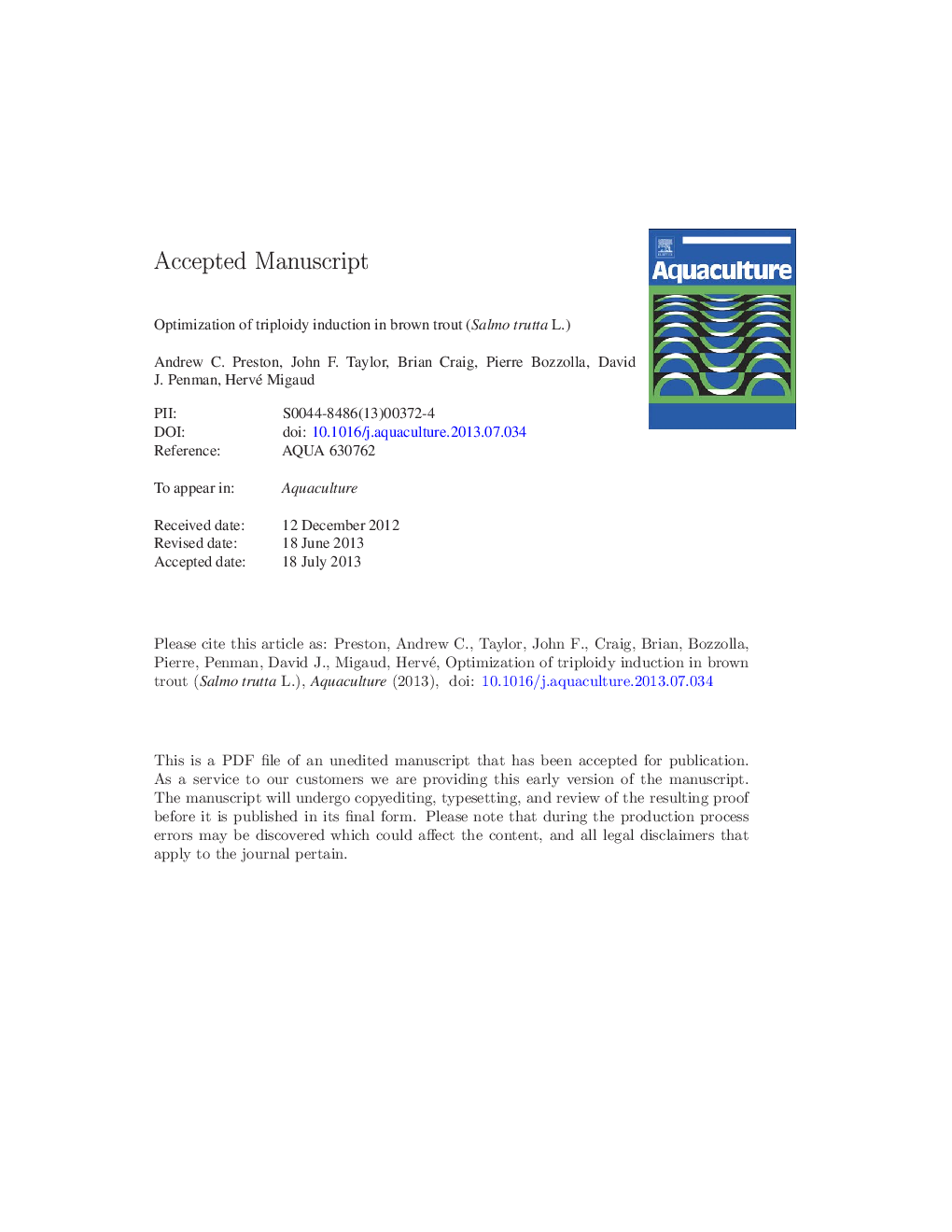| Article ID | Journal | Published Year | Pages | File Type |
|---|---|---|---|---|
| 8495370 | Aquaculture | 2013 | 31 Pages |
Abstract
Inland fisheries contribute substantially to the economies of England and Wales. Many trout fisheries rely partly or entirely on stocking to maintain catches. Given that farmed trout often differ genetically from their wild counterparts, wild trout could be at risk of reduced fitness due to interbreeding or competition with farmed fish. As a preventative measure, the UK Environment Agency has implemented the “National Trout and Grayling Strategy” which will only give consent to the stocking of rivers and some still waters with sterile, all-female triploid brown trout. In order to produce an optimised hydrostatic pressure induction protocol three experiments were conducted to (1) determine the optimal timing of application post-fertilisation, (2) define optimal pressure intensity and duration of the shock and (3) study the effect of temperature (6-12 °C) on triploid yield. Triploid rate was assessed using two different ploidy verification methods (blood smear and flow cytometry). Results indicated high survival to yolk sac absorption stage (69.2-93.6%) and high triploid yields (82.5-100%) from the range of treatments applied. Furthermore, no significant differences in triploid rates were shown when shock timings and durations were adjusted according to the temperature used. In all treatments deformity prevalence remained low (< 1.8%) during incubation up to yolk sac absorption (~ 550 degree days post hatch). Overall, this study showed that the optimised pressure shock for the induction of triploidy in brown trout delivering high survival and 100% triploid rate (a prerequisite to brown trout restocking) is a shock with a magnitude of 10,000 psi applied at 300 centigrade temperature minutes (CTM) for at least 5 min duration. The study also validated blood smear and flow cytometry as simple and accurate ploidy assessment techniques for brown trout.
Related Topics
Life Sciences
Agricultural and Biological Sciences
Aquatic Science
Authors
Andrew C. Preston, John F. Taylor, Brian Craig, Pierre Bozzolla, David J. Penman, Hervé Migaud,
